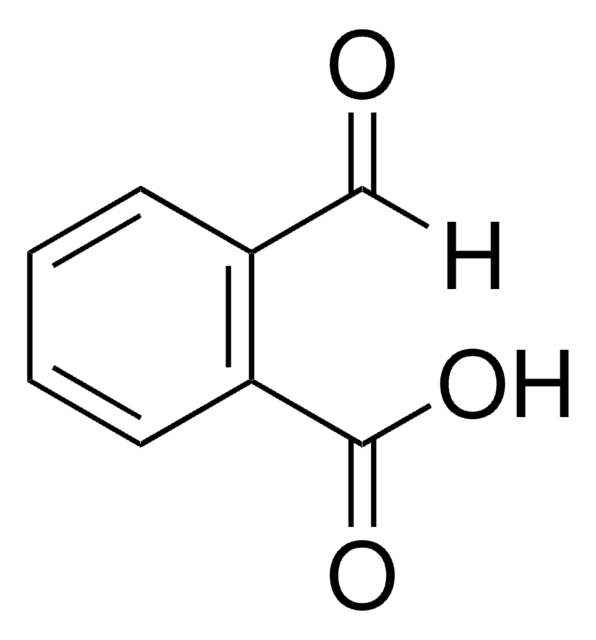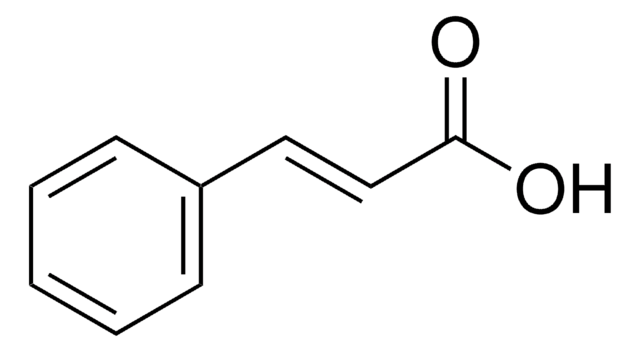G3407
Glutaric acid
99%
Sinónimos:
1,3-Propanedicarboxylic acid, 1,5-Pentanedioic acid
About This Item
Productos recomendados
assay
99%
bp
200 °C/20 mmHg (lit.)
mp
95-98 °C (lit.)
solubility
water: soluble 5 mg/mL, clear to slightly hazy, colorless to faintly yellow
alcohol: soluble(lit.)
chloroform: soluble(lit.)
SMILES string
OC(=O)CCCC(O)=O
InChI
1S/C5H8O4/c6-4(7)2-1-3-5(8)9/h1-3H2,(H,6,7)(H,8,9)
InChI key
JFCQEDHGNNZCLN-UHFFFAOYSA-N
¿Está buscando productos similares? Visita Guía de comparación de productos
Categorías relacionadas
General description
Glutaric acid (Pentanedioic Acid) is a linear dicarboxylic acid. It has been prepared by oxidizing cyclopentane, cyclopentanol and cyclopentanone.
Application
- Complexation with DL-lysine. Complexes have been reported to possess zwitterionic lysinium ions (positively charged) and semi-glutarate ions (negatively charged).
- Synthesis of complexes with L-arginine and L-histidine.
- Preparation of glycine-glutaric acid co-crystals. Phase transition studies of these cocrystals have been reported by single-crystal X-ray diffraction, polarized Raman spectroscopy and differential scanning calorimetry.
signalword
Danger
hcodes
Hazard Classifications
Eye Dam. 1 - Skin Corr. 1A
Storage Class
8A - Combustible corrosive hazardous materials
wgk_germany
WGK 1
flash_point_f
Not applicable
flash_point_c
Not applicable
ppe
dust mask type N95 (US), Eyeshields, Gloves
Certificados de análisis (COA)
Busque Certificados de análisis (COA) introduciendo el número de lote del producto. Los números de lote se encuentran en la etiqueta del producto después de las palabras «Lot» o «Batch»
¿Ya tiene este producto?
Encuentre la documentación para los productos que ha comprado recientemente en la Biblioteca de documentos.
Artículos
Inborn errors of metabolism are caused by changes in specific enzymatic reactions and hundreds of different such alterations, which affect about 1 of every 5000 newborns, have been characterized.
Nuestro equipo de científicos tiene experiencia en todas las áreas de investigación: Ciencias de la vida, Ciencia de los materiales, Síntesis química, Cromatografía, Analítica y muchas otras.
Póngase en contacto con el Servicio técnico









